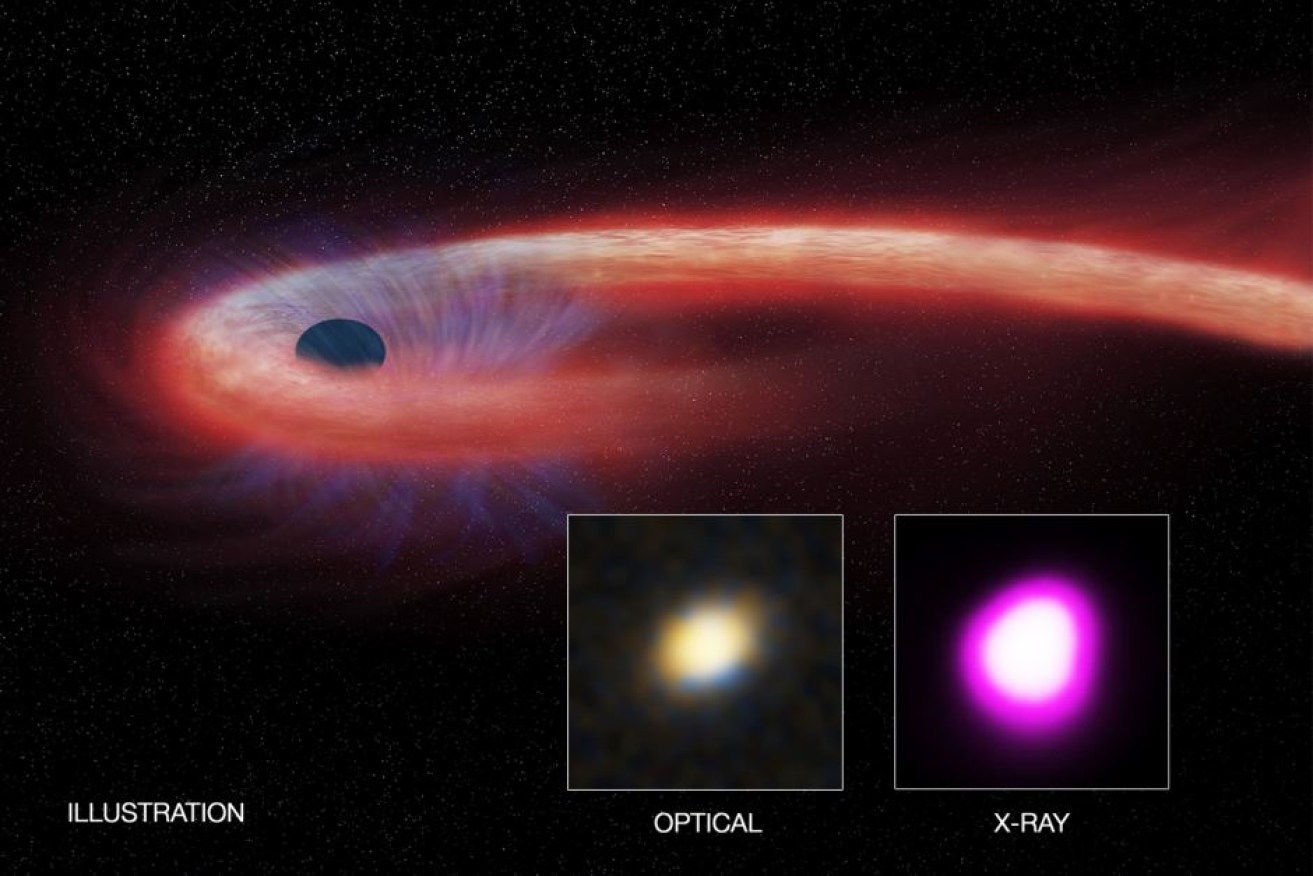Binge eating black hole devours star twice the size of the Sun

An artist's illustration depicts what astronomers call a tidal disruption event, or TDE. Photo: NASA: Chandra X-Ray Observatory
A giant black hole has taken a record-breaking decade to devour a star estimated to be twice the size of the Sun – and it is still chewing away.
Scientists detected the food fest in a small galaxy located 1.8 billion light-years from Earth using data from NASA’s Chandra X-ray Observatory and Swift satellite.
The ingestion of a star is known as a tidal disruption event (TDE) and happens when an object gets too close to a black hole and is torn apart by gravity.
Black hole feeding frenzies have been observed for decades but never on this scale, said research scientist Dacheng Lin from the University of New Hampshire in the United States.
“Dozens of tidal disruption events have been detected since the 1990s, but none that remained bright for nearly as long as this one,” Dr Lin said in a statement.
Others have lasted just one year, but this black hole has been consuming the star for 11 years and counting, making it the longest known TDE yet.
“We have witnessed a star’s spectacular and prolonged demise,” Dr Lin said.
The X-rays coming from this black hole also tell us something else: the object grows as it is being ingested.
“For most of the time we’ve been looking at this object, it has been growing rapidly,” said the Harvard-Smithsonian Centre for Astrophysics’ James Guillochon, a co-author.
“This tells us something unusual – like a star twice as heavy as our Sun – is being fed into the black hole.”
How does a black hole eat a star?
A black hole does not just eat a star in one big bite – the hole tends to play with its food.
“A star does not simply fall into the black hole like a snooker ball dropping into the corner pocket,” Associate Professor Lisa Harvey-Smith from the CSIRO said.
“Instead, it swings around the black hole several times and is torn to shreds.”
When the gas that makes up a star gets close to the hot region close to the black hole, it lets off fireworks made up of radiation and debris that is sent out into the host galaxy at high speeds.
The disintegrated pieces make up smaller stars that, in turn, get sucked up into the black hole.
What does this tell us about galaxy evolution?
Professor Geraint Lewis from the University of Sydney said by capturing the TDE, we were witnessing the growth of the centre of the galaxy.
“All galaxies have big black holes in the centre and the most asked question is, where do they come from?” Professor Lewis explained.
With the star disintegrating, the galaxy grows, and by consuming the star, so too grows the black hole.
“What this can show is that it looks like they’re sustained by feeding,” Professor Lewis said.
“This has given us a snapshot into the life of a small galaxy on the way to it growing to be a bigger galaxy with a bigger black hole.”
Will we see it from Earth?
Dr Lin and his team used data from a trio of orbiting X-ray telescopes to study the monstrous munching and capture the “firework” display.
The Earth’s atmosphere blocks out X-ray radiation, so the event will not be seen or felt from Earth.
However, the images revealed extremely energetic events that would not otherwise be seen by humans, making this capture extremely remarkable.
-ABC








